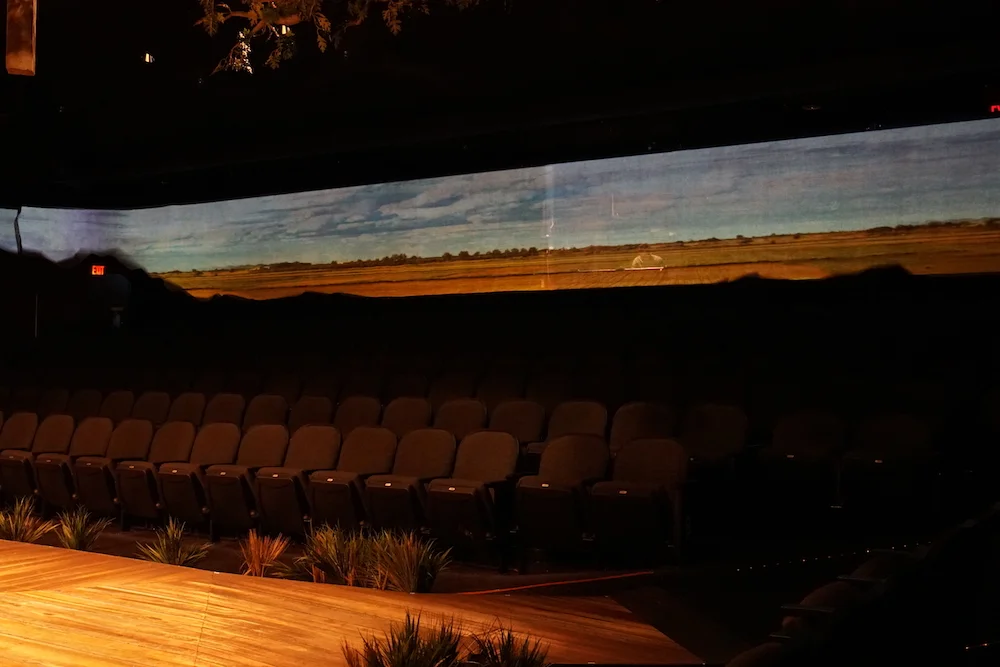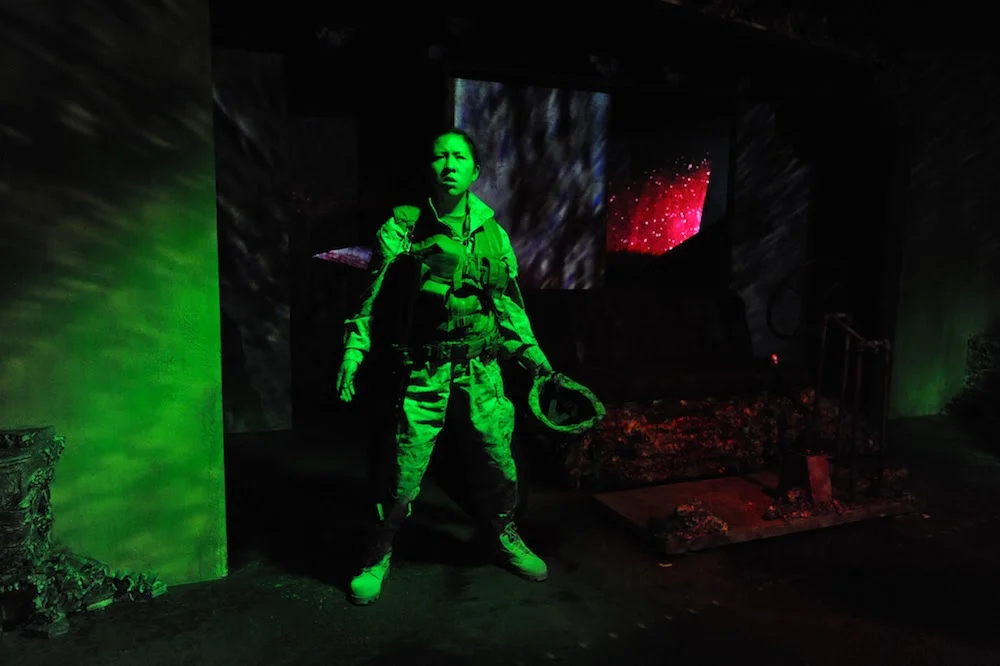Raven Theatre, Chicago IL | February 2019
Projection Design
Direction Cody Estle
Lighting Becca Jeffords
Scenic Jeffery D Kmiec
Drive was a play that everyone thinks they know and then you work on it again, and it’s a whole other thing. Under the detailed director of Cody Estle, this piece was cutting look at memory and trauma. The set was a large billboard on the side of a street and we used two high output projectors on printed rear-projection material to create locations and scenes the actors could reach up and touch.
“Jeffrey D. Kmiec’s set — a diagonal slash of road with a large billboard-like structure behind it – provides the backdrop for a series of projections, designed by Tony Churchill, that evoke the sexist advertising imagery of the 1960s, as well as giving us the “chapter titles” for the driving manual. We’re reminded that Li’l Bit’s abuse didn’t just happen in a family vacuum, but as part of a larger syndrome of constant sexualization of young girls.” -Chicago Tribune
photos by Michael Brosilow






































































